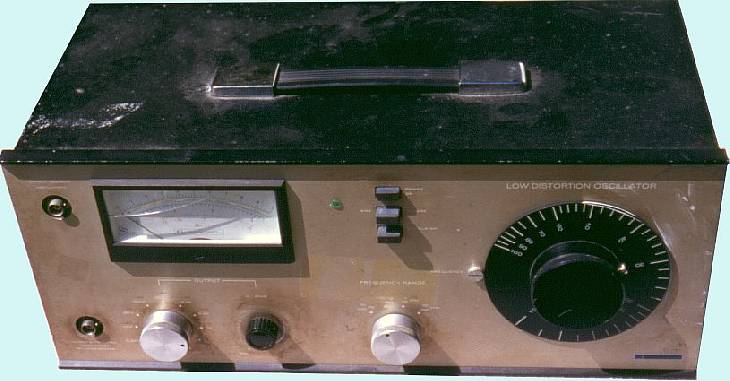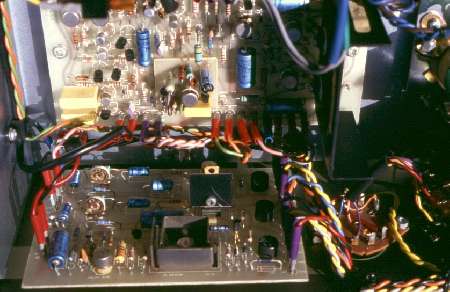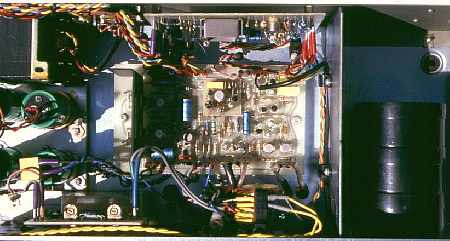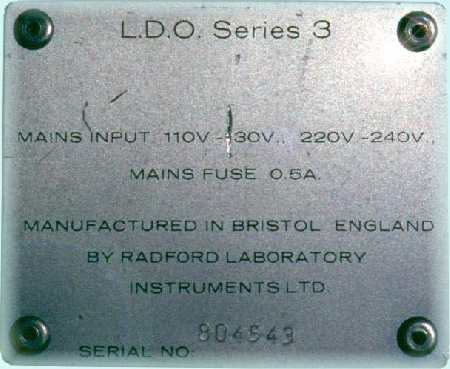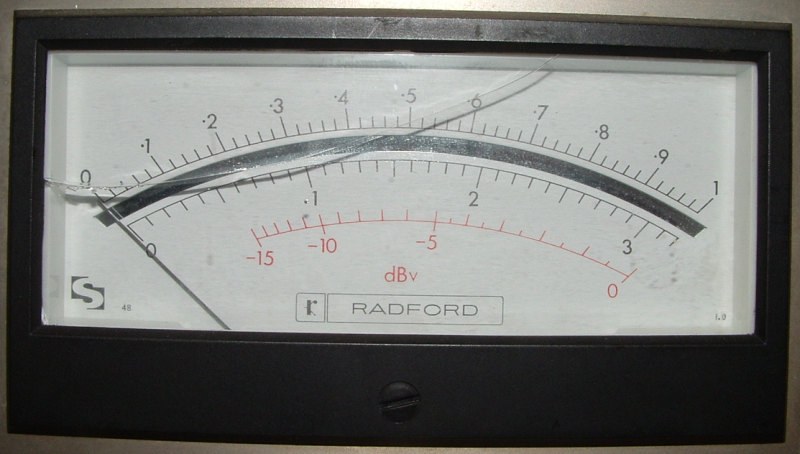Radford L.D.O.Series 3 - Low Distortion Twin-Tee Sine Oscillator |
||
|
|
||
|
|
|
|
|
|
|
|
|
Der Radford LDO Series 3 ist ein sehr klirrarmer Sinusgenerator für den Frequenzbereich von wenigen Hertz bis 100 kHz, einstellbar über einen Stufenschalter und ein größeres Spezialpotentiometer. Der Generator ist nach üblichen Aspekten und im vorliegenden Zustand nicht gerade eine Schönheit, aber er hat trotzdem technisch viel zu bieten. Er kann die wesentlichen nötigen Amplituden einwandfrei und sauber stellen, bleibt auch beim Verstellen der Frequenz amplitudenstabil. Sein Klirrfaktor ist sehr gut, bei allen einstellbaren Frequenzen und Amplituden ist beim Messen mit dem HP 3580A keinerlei Harmonische zu erkennen, d.h. die Harmonischen liegen garantiert besser als 90dB unterhalb der Grundwelle. Die Auflösungsgrenze des 3580A liegt bei 90 dB Dynamikumfang. Für das Klirrfaktormessen der meisten Hifi Verstärker ist das bereits völligst ausreichend. Die Klirrfaktor Messung mit einer Soundkarte (nur 16 Bit aktiviert) ergab für diesen Generator etwa -95 dBc bei 1 kHz. Das Limit liegt hier wieder bei der Soundkarte. Der Generator kann auch Rechtecksignale liefern. Das Highlight neben der ordentlichen Verarbeitung ist das riesige Spezialpotentiometer, es sicherlich einen hervorragenden Gleichlauf. Übrigens: der Generator hatte gebraucht nur lächerliche 10 DM gekostet, da ihn keiner haben wollte auf dem großen Meßgeräte Stapel ganz unten. Leider habe ich kein Manual davon. The Radford LDO Series3 is a very low distortion sine oscillator for an frequency range of several Hertz to 100 kHz, adjustable by a step switch and a big special potentiometer. This genarator is really not a beauty, but with amazing technical specifications. The harmonic distortion is 90 dB below the fundamental for every frequency and amplitude, measured with an HP 3580A spectrum analyzer, there is nothing to see only the fundamental. Consider the 3580A dynamic measurement range is not more than 90 dB. For measuring distortion of most audio amplifier is this already excellent enough. The generator can deliver also square wave signals. I got the generator for only 5 Euro on an second hand flea market, nobody saw the device most down in an skeleton transport box. Unfortunately I don't have the manual. |
||
|
Update Februar 2006: I've got a nice email from Mike, a former Radford Research and Development Engineer. He developed analog hardware of this instrument within the team He wrote the instrument harmonic distortions are about 120 dB below fundamental wave. (With my soundcard or my analog spectrum analyzer, I can't measure such a low distortion level). This oscillator is the most often used generator in my whole test equipment collection, You don't believe? See other pages in my homepage, you'll find the instrument in different pages.
Mike wrote me interesting comments: "I'm sorry I have to correct you on one point, the LDO3 is not a Wien, it is a twin-tee, the signal passes through two capacitors in series with the central node going though a resistor to ground, and a second parallel path through two resistors in series with the central node going thorugh a capacitor to ground. The twin-tee circuit values are offset so that instead of rejecting the fundamental signal completely it is passed at -20dB. The amplifier has a gain of +20dB. In later designs I got away from the twin tee because you always needed that 20dB of gain, so the top frequency of the oscillator was a factor of ten down on the ft of the low-distortion amplifier. So instead I used a biquad (two integrators and an inverter) as the oscillator, this worked perfectly and I was able to use low distortion opamps instead of discretes. Again it was the amplitude sensing and the control loop that mattered. With a biquad you need to tweak the phase to control amplitude, I did that by injecting a miniscule amount of signal at ninety degrees through a controlled transconductace." thanks a lot
|
||
